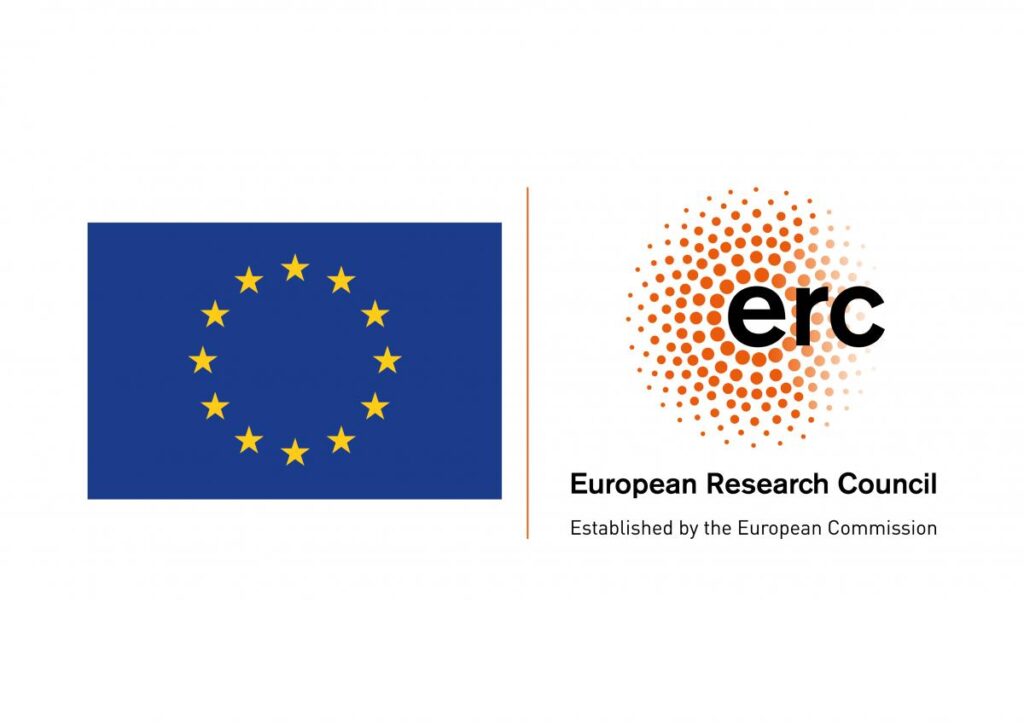The Caliphal Finances Team organised a panel at a major academic event for scholars studying papyri, a conference organised every three years by the Association Internationale de Papyrologues (AIP). PI Marie Legendre, PhD student Georgi Obatnin and postdocs Noëmie Lucas and Eline Scheerlinck all contributed to the panel “Abbasid Fiscal Documents” with presentations on their current research. We were honoured to have Stefanie Schmidt as a contributor to the panel. Stefanie was a participant in our papyrological workshop of last Spring, and you can read about her research and career in her Interview with a Researcher on this blog. Our panel originally included a contribution by Theresa Grabmaier, but unfortunately, she was unable to participate, and we missed her greatly. You can read the panel abstract which we submitted for the conference below this post.

Eline Scheerlinck and Marie Legendre presenting at the 31st International Congress of Papyrologists in Cologne, 31st July 2025. Photo by Loreleï Vanderheyden.
The panel focused on the fiscal administration of Early Islamic Egypt, emphasising the Abbasid period. Marie introduced the Caliphal Finances project and the team before discussing Arabic accounting documents. She explored the development of numerical writing in 8th-century Egyptian Arabic documents, highlighting a particular document in the Austrian National Library’s collection of which she is preparing an edition. This document includes some numerals which are barely recognisable as the Greek letters on which they are based. For example, the fraction 1/48 appears both alphanumerically (one can recognize with difficulty the respective letters) and with the distinct curved symbol unique to Arabic documents. This document then seemingly represents a transitional moment in Arabic accounting practices for writing 1/48.
Thanks to discussions with international colleagues in Edinburgh and Cologne, I, Eline, could present and further develop a possible explanation of the form and use of the symbol for 1/48, which I will discuss in a future post. My presentation shifted from numbers to the use and reuse of the documents themselves, exploring the life of preserved accounting documents by examining other texts written on the same papyrus. This represented a first step of a study of the production, use and reuse of 8th-century Greek accounting documents in administrative offices. While some papyrus sheets have continuous accounts, most show other unrelated texts or exercises, indicating different usage patterns before discard. In some cases, they were repurposed as letter-writing paper.

Georgi Obatnin presenting at the 31st International Congress of Papyrologists, 31st July 2025. Photo by Loreleï Vanderheyden.
Noëmie shared insights from her research on the finance directors (aṣḥāb al-kharāj) in Egypt, focusing on those during Hārūn al-Rashīd’s reign (786–809). Using a wide range of sources such as papyri, glass weights and narrative sources, Noëmie was able to tease out and define the multiple roles and responsibilities of these important but not very well-known officials during the early period of Abbasid rule. Noëmie discussed other aspects of her study on the aṣḥāb al-kharāj in this lecture and at our papyrological workshop last Spring.
Georgi’s presentation focused on money and value recorded in Abbasid-period Arabic documents, which he also addressed at a previous lecture and our papyrological workshop. He discussed the specific terminology for coins in these documents and compared it to that used for wheat. Emphasising the social aspect of his socio-economic analysis of kind and cash conversion, Georgi explored the intermediaries—merchants, monks, village heads, and tax collectors—who participated in fiscal practices.
Stefanie Schmidt’s paper was in many ways a fascinating follow-up to and elaboration of her presentation on the ʿāmil al-amīr at our papyrological workshop. A thorough analysis of the existing literature and the often-contradictory papyrological source material allowed Stefanie to define the main currents of scholars’ understanding of the relationship between the ʿāmil al-amīr and the pagarch in Early Islamic Egypt and to put forth her own hypothesis.
We were delighted by the high attendance at our panel. The International Congress of Papyrologists typically includes sessions on Arabic papyri, and it was noted with satisfaction by several colleagues that in general the Arabic papyrology sessions were well-attended, with standing-room only at times. Overall, the Caliphal Finances team reflects on a productive congress enriched by valuable discussions with international colleagues. At the same time, as historians and papyrologists, we recognise that our research fields are not apolitical, and issues such as the provenance of papyri are crucial to the way we approach the discipline and our sources. A critical discussion of certain aspects of contemporary papyrology was published shortly before the congress at Everyday Orientalism.
Panel abstract Abbasid Fiscal Documents
This panel explores the functioning of fiscal administration in Abbasid Egypt through a detailed examination of various types of documents, focusing on both edited documents and work-in-progress editions. Case studies from regions such as the Fayyum and Aswan offer regional insights into the workings of the fiscal administration. The papers will address fiscal practices from different angles such as accounting practices, development of monetary terminology, as well as the involvement of social groups in taxation at the local level. The panel also addresses the role of fiscal administrators (ʿummāl al-amīr) at the district level, as well as the aṣḥāb al-kharāj at the level of the capital. With a comparative approach, the discussion spans various regions and types of documents, highlighting the multilingual nature of the available sources. By combining documentary evidence with literary sources, this panel provides a comprehensive understanding of Abbasid fiscal practices and their local implementations across Egypt.
Banner image: the Cologne Cathedral. Photo by Eline Scheerlinck.




Leave a Reply